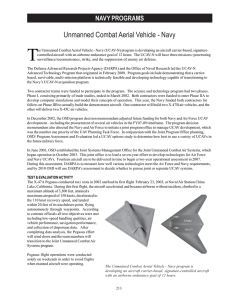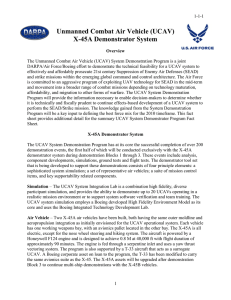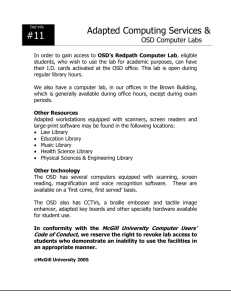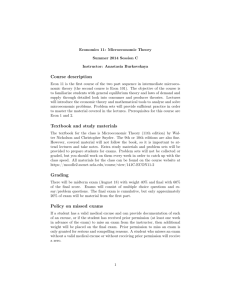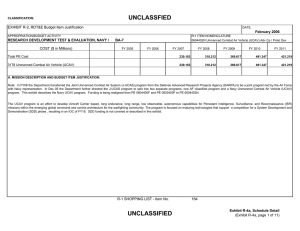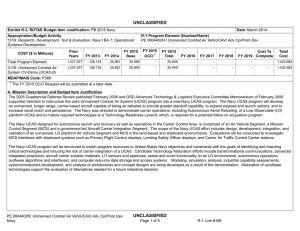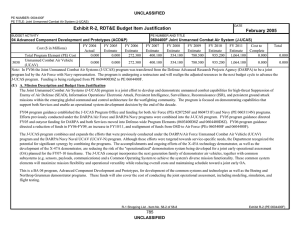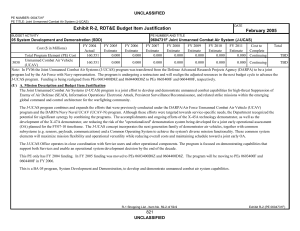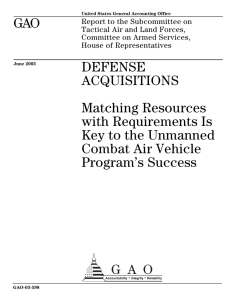T Unmanned Combat Aerial Vehicle (UCAV) - Air Force AIR FORCE PROGRAMS
advertisement
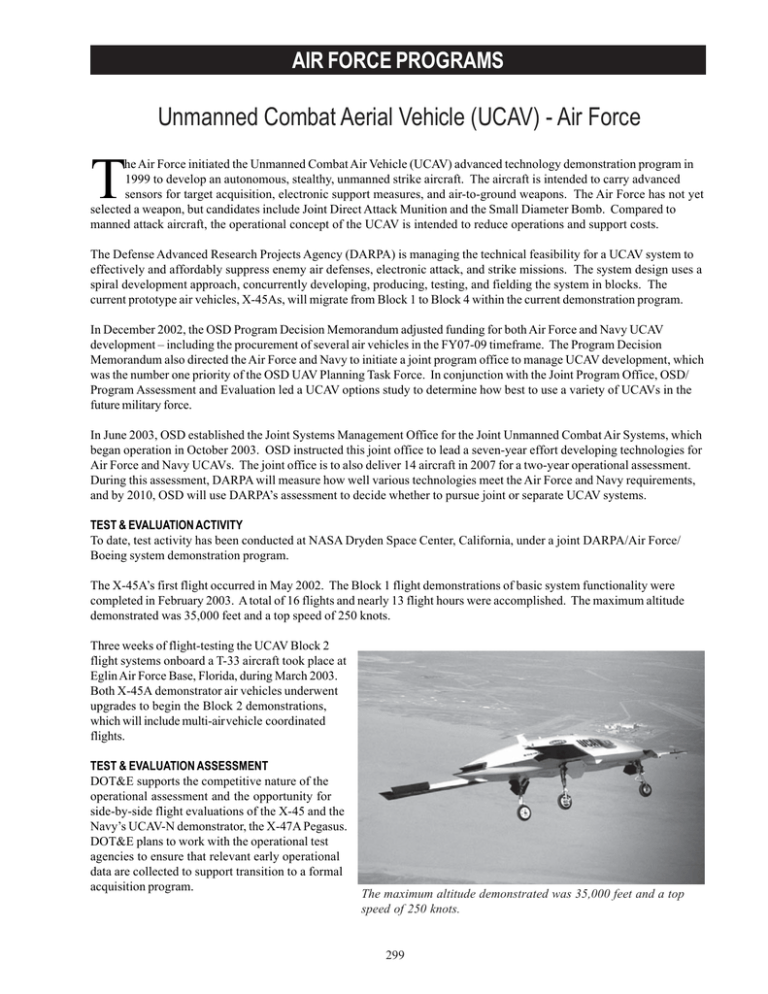
AIR FORCE PROGRAMS Unmanned Combat Aerial Vehicle (UCAV) - Air Force T he Air Force initiated the Unmanned Combat Air Vehicle (UCAV) advanced technology demonstration program in 1999 to develop an autonomous, stealthy, unmanned strike aircraft. The aircraft is intended to carry advanced sensors for target acquisition, electronic support measures, and air-to-ground weapons. The Air Force has not yet selected a weapon, but candidates include Joint Direct Attack Munition and the Small Diameter Bomb. Compared to manned attack aircraft, the operational concept of the UCAV is intended to reduce operations and support costs. The Defense Advanced Research Projects Agency (DARPA) is managing the technical feasibility for a UCAV system to effectively and affordably suppress enemy air defenses, electronic attack, and strike missions. The system design uses a spiral development approach, concurrently developing, producing, testing, and fielding the system in blocks. The current prototype air vehicles, X-45As, will migrate from Block 1 to Block 4 within the current demonstration program. In December 2002, the OSD Program Decision Memorandum adjusted funding for both Air Force and Navy UCAV development – including the procurement of several air vehicles in the FY07-09 timeframe. The Program Decision Memorandum also directed the Air Force and Navy to initiate a joint program office to manage UCAV development, which was the number one priority of the OSD UAV Planning Task Force. In conjunction with the Joint Program Office, OSD/ Program Assessment and Evaluation led a UCAV options study to determine how best to use a variety of UCAVs in the future military force. In June 2003, OSD established the Joint Systems Management Office for the Joint Unmanned Combat Air Systems, which began operation in October 2003. OSD instructed this joint office to lead a seven-year effort developing technologies for Air Force and Navy UCAVs. The joint office is to also deliver 14 aircraft in 2007 for a two-year operational assessment. During this assessment, DARPA will measure how well various technologies meet the Air Force and Navy requirements, and by 2010, OSD will use DARPA’s assessment to decide whether to pursue joint or separate UCAV systems. TEST & EVALUATION ACTIVITY To date, test activity has been conducted at NASA Dryden Space Center, California, under a joint DARPA/Air Force/ Boeing system demonstration program. The X-45A’s first flight occurred in May 2002. The Block 1 flight demonstrations of basic system functionality were completed in February 2003. A total of 16 flights and nearly 13 flight hours were accomplished. The maximum altitude demonstrated was 35,000 feet and a top speed of 250 knots. Three weeks of flight-testing the UCAV Block 2 flight systems onboard a T-33 aircraft took place at Eglin Air Force Base, Florida, during March 2003. Both X-45A demonstrator air vehicles underwent upgrades to begin the Block 2 demonstrations, which will include multi-airvehicle coordinated flights. TEST & EVALUATION ASSESSMENT DOT&E supports the competitive nature of the operational assessment and the opportunity for side-by-side flight evaluations of the X-45 and the Navy’s UCAV-N demonstrator, the X-47A Pegasus. DOT&E plans to work with the operational test agencies to ensure that relevant early operational data are collected to support transition to a formal acquisition program. The maximum altitude demonstrated was 35,000 feet and a top speed of 250 knots. 299 AIR FORCE PROGRAMS 300
